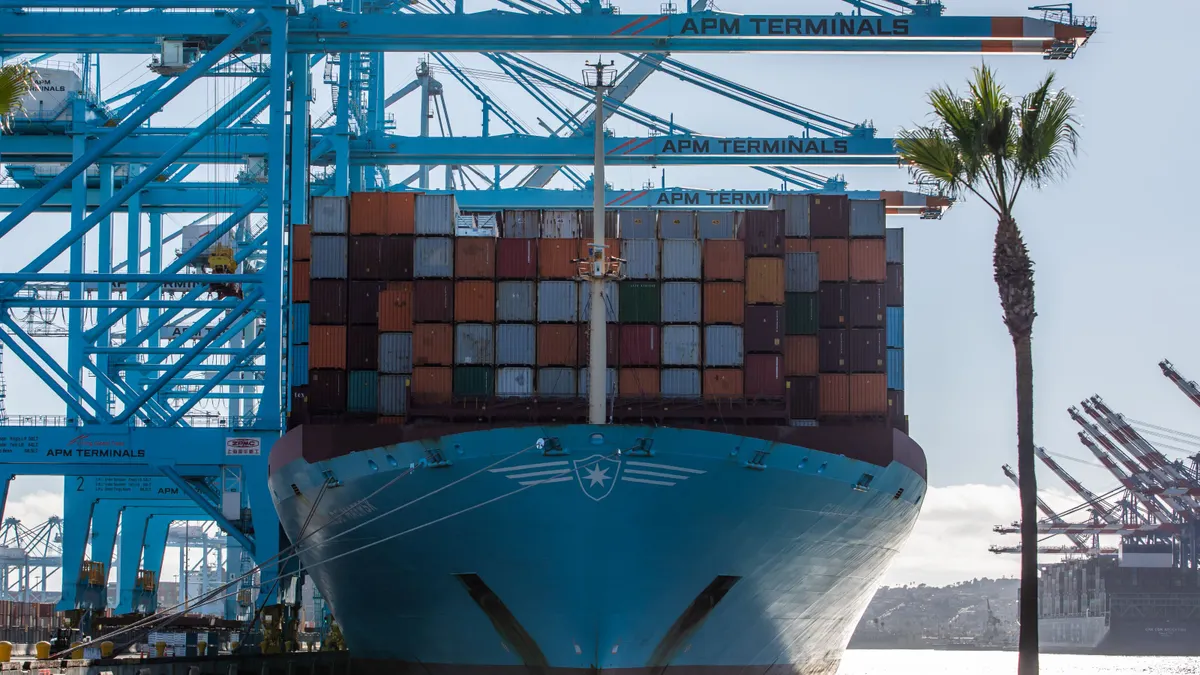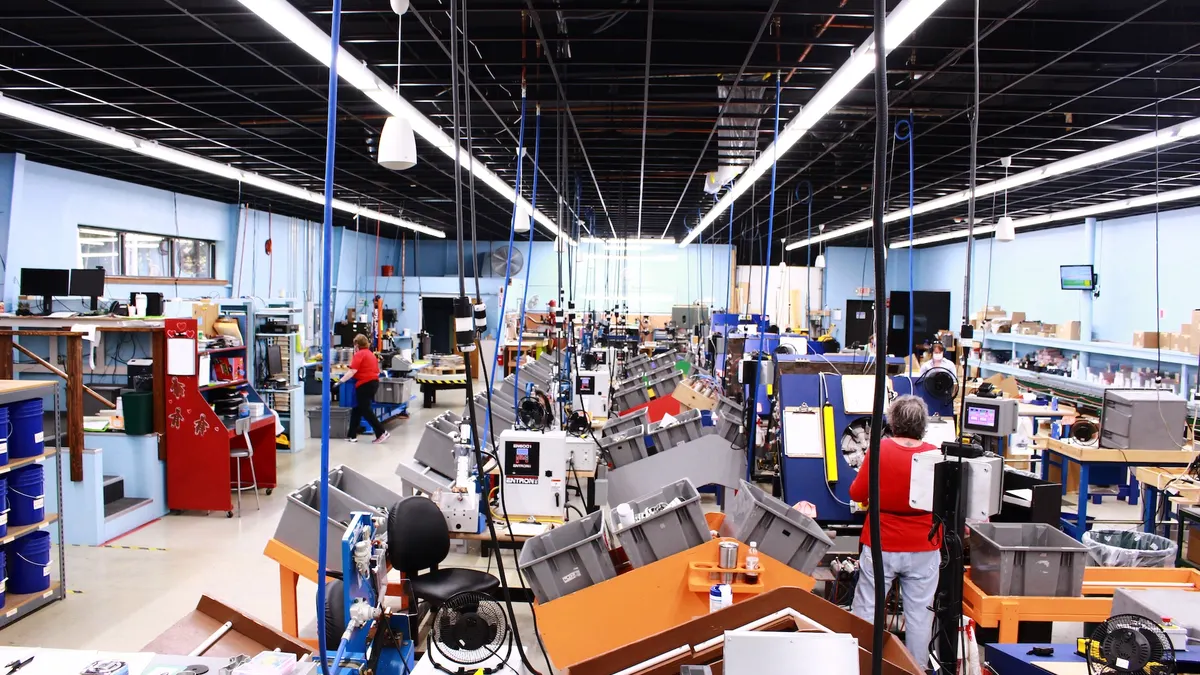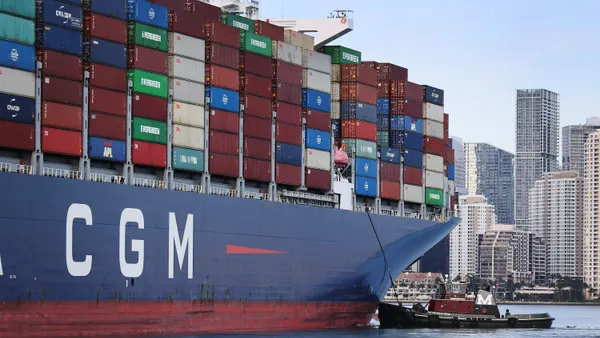Dive Brief:
- Cargo volumes at the Port of Long Beach in California have remained robust in 2025, despite tariff uncertainty, although the outlook is muted for the remainder of the year, port executives said during a Friday media briefing.
- Through the end of October, the port handled 8.2 million TEUs, up 4.1% from the same 10-month stretch in 2024, its busiest year on record.
- “We are on track to end the year relatively even with the record setting 9.6 million TEUs that we moved last year,” said CEO Mario Cordero during the briefing. “Just like last year, we are moving more cargo than we did during the pandemic and we're doing it with no congestion and disruptions.”
Dive Insight:
Cargo frontloading in the face of a slew of new tariffs from the Trump administration has kept volumes robust at the Port of Long Beach this year, according to COO Noel Hacegaba.
“And that frontloading trend continued, has continued through this year, and that has been the primary reason why we have seen record levels of cargo volumes,” he said, noting that several surges created “a series of artificial peaks.”
Notably, the port’s two busiest months of the year came in January, the same month Donald Trump was inaugurated, and July, the month before a 90-day pause on country-specific reciprocal duties expired.
“The challenges were many, and there's no doubt that many companies and their workers suffered,” Cordero said. “But cargo volume is turning out to be just as high this year as it was last year.”
Although annual cargo volumes have remained strong, the Port of Long Beach and others may face a slowdown in the next two months, primarily because most holiday goods were brought in early via frontloading, according to data from the National Retail Federation and Hackett Associates.
Cargo volume expected to slump into 2026
“Store shelves are well stocked and the effect on prices has been minimized, largely thanks to retailers taking steps like frontloading imports during times of low or delayed tariff increases or absorbing the costs themselves,” Jonathan Gold, VP of supply chain and customs policy at the NRF, said in a Nov. 7 press release. However, the association is forecasting a 2.3% decline in cargo for the full calendar year.
Entering 2026, Cordero expects consumers to begin feeling larger tariff impacts as shippers more aggressively hike prices to pass along the cost of levies. Despite this, he projected “a moderate increase in cargo in 2026,” adding that a recent consensus agreement between the U.S. and China could offset some of the tariff burden and support volume growth.
“We do expect an increase from cargo from China,” Cordero said. “But nevertheless, keep in mind that in terms of the years ahead, the real question is how much of that reliance of manufacturing that presently is in China will move to other regions of the world, more specifically, to Southeast Asia.”
Looking nationally, the NRF and Hackett Associates are projecting a deeper cargo volume trough in the first quarter of 2026 amid ongoing tariff machinations.
“These conditions make market forecasting highly uncertain,” said Ben Hackett, founder of Hackett Associates, in the Nov. 7 release. “Our trade outlook is for a small decline in imports this year compared with 2024 and a further, larger decline in the first quarter of 2026.”
Editor’s note: This story was first published in our Logistics Weekly newsletter. Sign up here.













